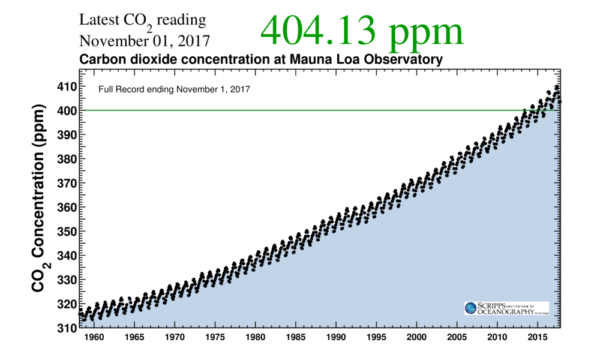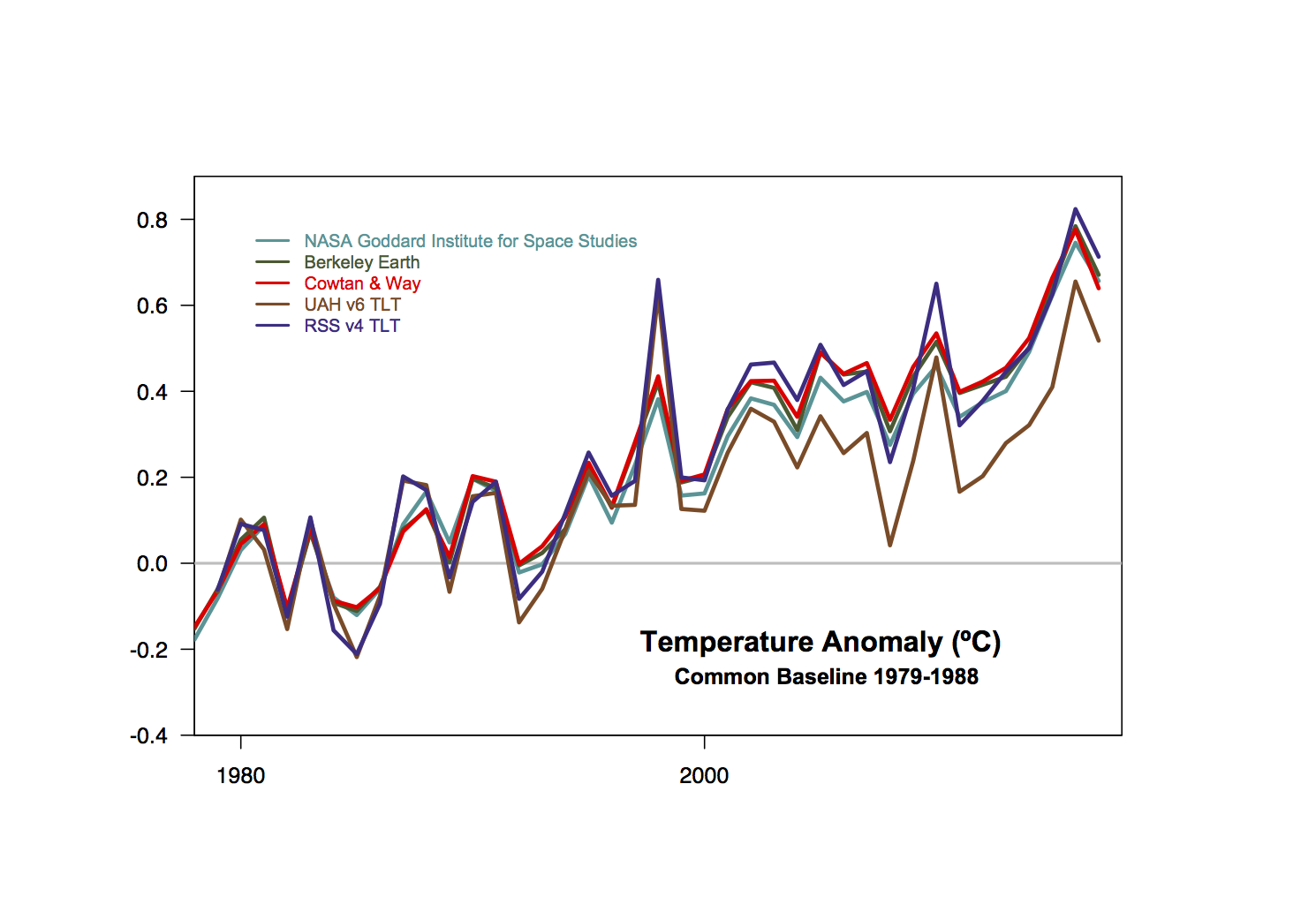Some of you might have read about the lawsuit by a number of municipalities (including San Francisco and Oakland) against the major oil companies for damages (related primarily to sea level rise) caused by anthropogenic climate change. The legal details on standing, jurisdiction, etc. are all very interesting (follow @ColumbiaClimate for those details), but somewhat uniquely, the judge (William Alsup) has asked for a tutorial on climate science (2 hours of evidence from the plaintiffs and the defendents). Furthermore, he has posted a list of eight questions that he’d like the teams to answer.
Climate Science
Forced responses: Mar 2018
This month’s open thread on responses to climate change (politics, adaptation, mitigation etc.). Please stay focused on the overall topic. Digressions into the nature and history of communism/feudal societies/anarchistic utopias are off topic and won’t be posted. Thanks. The open thread for climate science topics is here.
Unforced variations: Mar 2018
This month’s open thread for climate science related items. The open thread for responses to climate change is here.
More ice-out and skating day data sets
The responses to the last post on the Rideau Canal Skateway season changes were interesting, and led to a few pointers to additional data sets that show similar trends and some rather odd counter-points from the usual suspects.
[Read more…] about More ice-out and skating day data sets
Rideau Canal Skateway
I’ve been interested in indirect climate-related datasets for a while (for instance, the Nenana Ice Classic). One that I was reminded of yesterday is the 48-year series of openings and closings of the Rideau Canal Skateway in Ottawa.
Unforced variations: Feb 2018
This month’s open thread for climate science topics. Note that discussions about mitigation and/or adaptation should be on the Forced Responses thread.
Let’s try and avoid a Groundhog Day scenario in the comments!
IPCC Communication handbook
A new handbook on science communication came out from IPCC this week. Nominally it’s for climate science related communications, but it has a wider application as well. This arose mainly out of an “Expert meeting on Communication” that IPCC held in 2016.
6 principles to help IPCC scientists better communicate their work
There was a Guardian article on it as well.
The six principles are pretty straightforward:
- Be a confident communicator
- Talk about the real world, not abstract ideas
- Connect with what matters to your audience
- Tell a human story
- Lead with what you know
- Use the most effective visual communication
Each is supported with references to the relevant literature and with climate-related (“real world”) examples that are themselves confidently communicated with effective visuals.
But what do people think? Is this a useful addition to the literature on communication? Anything you think doesn’t work? or that perhaps surprises you?
PS. I’m perhaps a little biased because they use a Peter Essick photo for their cover art that was also in my book.
The global CO2 rise: the facts, Exxon and the favorite denial tricks
The basic facts about the global increase of CO2 in our atmosphere are clear and established beyond reasonable doubt. Nevertheless, I’ve recently seen some of the old myths peddled by “climate skeptics” pop up again. Are the forests responsible for the CO2 increase? Or volcanoes? Or perhaps the oceans?
Let’s start with a brief overview of the most important data and facts about the increase in the carbon dioxide concentration in the atmosphere:
- Since the beginning of industrialization, the CO2 concentration has risen from 280 ppm (the value of the previous millennia of the Holocene) to now 405 ppm.
- This increase by 45 percent (or 125 ppm) is completely caused by humans.
- The CO2 concentration is thus now already higher than it has been for several million years.
- The additional 125 ppm CO2 have a heating effect of 2 watts per square meter of earth surface, due to the well-known greenhouse effect – enough to raise the global temperature by around 1°C until the present.

Fig. 1 Perhaps the most important scientific measurement series of the 20th century: the CO2 concentration of the atmosphere, measured on Mauna Loa in Hawaii. Other stations of the global CO2 measurement network show almost exactly the same; the most important regional variation is the greatly subdued seasonal cycle at stations in the southern hemisphere. This seasonal variation is mainly due to the “inhaling and exhaling” of the forests over the year on the land masses of the northern hemisphere. Source (updated daily): Scripps Institution of Oceanography. [Read more…] about The global CO2 rise: the facts, Exxon and the favorite denial tricks
The claim of reduced uncertainty for equilibrium climate sensitivity is premature
A recent story in the Guardian claims that new calculations reduce the uncertainty associated with a global warming:
A revised calculation of how greenhouse gases drive up the planet’s temperature reduces the range of possible end-of-century outcomes by more than half, …
It was based on a study recently published in Nature [cite ref=”(Cox et al. 2018)”]doi:10.1038/nature25450[/cite], however, I think its conclusions are premature.
[Read more…] about The claim of reduced uncertainty for equilibrium climate sensitivity is premature
2017 temperature summary
This is a thread to discuss the surface temperature records that were all released yesterday (Jan 18). There is far too much data-vizualization on this to link to, but feel free to do so in the comments. Bottom line? It’s still getting warmer.

[Update: the page of model/observational data comparisons has now been updated too.]